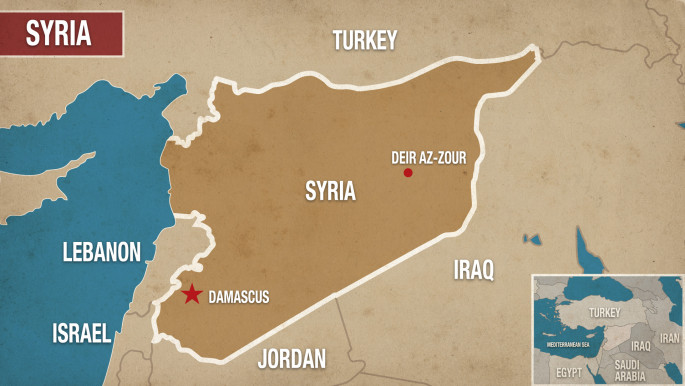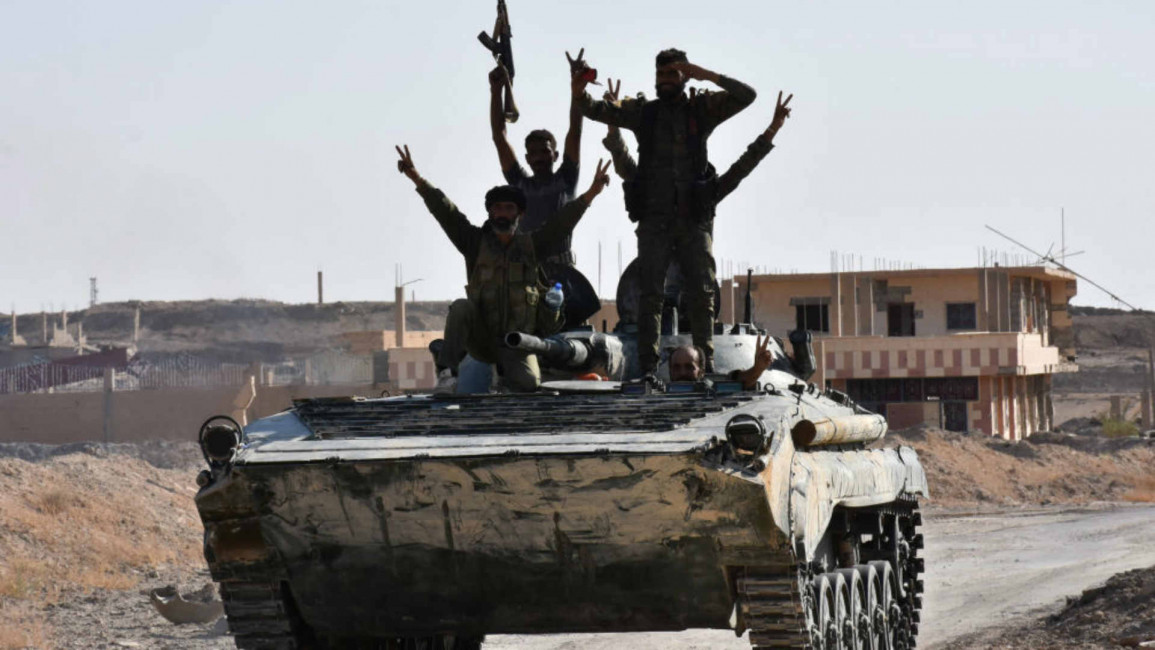
IS' defeat in Deir az-Zour will not spell the end of extremism
There, local forces backed by regional and international powers are competing for control of the area, as Islamic State loses its last strongholds. Yet, the region's history of religious extremsim and local rivalries born from the IS era, could see an enduring extremist insurgency in the medium term.
Eastern Syria, one of the wealthiest regions in terms of natural resources, has long been neglected by the central government. According to Bassam Barabandi, who recently co-authored a paper for the Center for a New National Security (CNAS) mapping the tribal landscape in Deir az-Zour, riches derived from the region oil and gas wealth by the regime of president Bashar al-Assad were rarely re-distributed at the level of the local population.
"Even, before the 2011 revolution, Syria's northern and eastern region, which produced water and electricity where plagued by electrical cuts and water shortages. In addition, outsiders were brought in to run the hydrocarbon infrastructure. This created a feeling of resentment among the local population", he explains.
According to a recent paper by the Justice for Life Organization (JFLO), poverty levels had reached 35 percent in Deir az-Zour and unemployment 34 percent before the 2011 uprising.
Disenfranchised by systematic central government policy, residents of Deir az-Zour were dealt significant blows in 2005 and 2010, when the agricultural region was hit by a severe drought resulting from climate change.
 |
Disenfranchised by systematic central government policy, residents of Deir az-Zour were dealt significant blows in 2005 and 2010, when the agricultural region was hit by a severe drought |  |
This period coincided with the Assad regime's jihadist drive towards Iraq, where the US had been waging war since 2003. "One of the bastions of Jabhat al-Nusra in Syria is in the Sheheil area, which is located next to where the Kahbour river used to run. As the river dried up and farmers lost their sources of revenues, al-Qaeda was able to carve a stronghold for itself in the region", says Dr Eyad Kharaba, in an interview with the author.
 |
|
| [Click to enlarge] |
According to the JFLO, some members of Deir az-Zour tribes, such as the Bu Kamil and Bkayer who fought in Iraq, revived the ideology that had been brought in while fighting in Iraq in 2003.
Many members of al-Qaeda who hailed from these regions, and an influential leader of the Nusra Front (now known as Hayat Tahrir al-Sham) Abu Mariah Qahtani, are also known to have resided in Sheheil. According to the CNAS report, unlike in Raqqa and Al-Hasakeh, al-Qaeda's branch in Deir az-Zour remained cohesive and did not defect to the Islamic State.
"The group has hundreds of individuals from Deir az-Zour, and a broader network that it could utilise to return as a committed force against the regime. Sources also estimate that around 450 fighters from this second cadre are part of an organisation called Ajnad al-Sharqiyya that belong to HTS, in Idlib" explains the CNAS report.
After IS' takeover of Deir az-Zour in 2014, the organisation relied on similar tactics - previously adopted by the Assad regime - fragmenting the region's social fabric. It also put in place, according to Dr Kharaba, a 'wali' or administrator from the influential Egaidat tribe.
IS used economic incentive and coercion to subdue the tribes. "ISIS allocated 20 percent or 30 percent of oil revenues to local tribal members", points out Barabandi. Their creation of Diwan Ashair, a ministry responsible for tribal outreach, demonstrates the importance of the tribes in the eyes of IS.
 |
Extremism in Deir az-Zour can only be resolved by creating real employment opportunities and development projects |  |
IS imposed itself on the Deir az-Zour scene by promoting sub-clan identities successfully, both at individual and tribal military levels. With IS significantly weakened in Syria, does it spell the end of religious extremism in Deir az-Zour?
"ISIS Syrian 'ansars' followers are aware that the ISIS religion was false and many defected from the organisation, but there is still a lot of ignorance in Deir az-Zour" says Sheikh Daham Mounadi from the Egaidat tribe.
For Barabandi, extremism in Deir az-Zour can only be resolved by creating real employment opportunities and developmental projects. "In addition, the problem of extremism is not prevalent in large urban hubs but mostly in rural areas, or on the borders with Iraq", he adds.
Read more: Civilians in line of fire: Syria violence at most 'intense level' since East Aleppo battle
It is in this complex field that forces loyal to the regime of Assad and US-backed and Kurdish-dominated Syrian Democratic Forces (SDF) are advancing in Deir az-Zour.
The division of Deir az-Zour between these two forces does not mean the end of the extremist ideology in the region. The lack of stability, a dual regime and a strong Iranian presence on the border could well open the door for al-Qaeda to return to the governorate it once considered as its largest stronghold.
Mona Alami a non-resident fellow with the Atlantic council covering Middle East politics with a special interest in radical organizations.
Follow her on Twitter: @monaalami
Opinions expressed in this article remain those of the author and do not necessarily represent those of The New Arab, its editorial board or staff.



